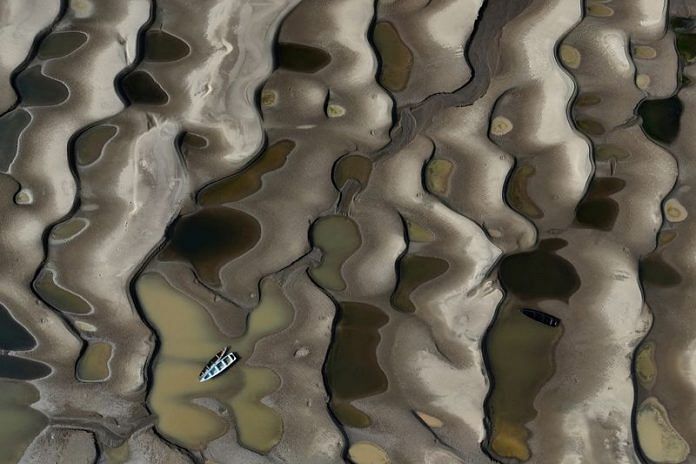By Bruno Kelly
MANACAPURU, Brazil (Reuters) – The Solimoes, one of the two largest tributaries of the Amazon River in Brazil, fell to its lowest level ever on Monday in the worst drought on record in the Amazon region, leaving villages on its banks stranded without food, water and transport.
At Manacapuru, some 100 km (63 miles) upriver from state capital Manaus where it meets the Rio Negro to form the mighty Amazon, the depth of the Solimoes measured at just 3 m (9.8 feet), according to the Civil Defense agency.
That is 11 cm (4.3 inches) lower than the previous record low registered on Oct. 25 last year.
With almost another month to go before the rains come to end the dry season, the level of the Solimoes, which flows down from the Andes in Peru, is expected to drop further in coming weeks, deepening the crisis for riverine communities.
Villages have been left isolated, without transport on water too shallow for boats to travel on, and they are lacking food supplies and, more critically, drinking water.
The exposed Solimoes riverbed has turned into a massive long sandbank that the villagers have to walk across for two hours to get home carrying their shopping under a blazing sun.
“This is very hard. Everyday we have to this long walk along the beach carrying our things,” said Taciara Souza Oliveira, a young woman.
Boats were stranded on river banks and some were trapped in ponds of water in the sand dunes, in areas that were once navigable for large boats.
“The drought is bad and it is getting worse. There is still a month to go of dry season. We have to make this sacrifice to get home,” said riverside resident Manuel de Castro.
Fishing is the main source of protein for river communities and the Indigenous people of the rainforest, but the fish have disappeared, and many have died in shallow waters that are too warm for them to survive in.
Environmentalists say climate change and global warming are drying up rivers in the Amazon and leading to unprecedented wildfires that are destroying parched vegetation.
(Reporting by Bruno Keppy and Anthony Boadle; Editing by Sonali Paul)
Disclaimer: This report is auto generated from the Reuters news service. ThePrint holds no responsibilty for its content.



